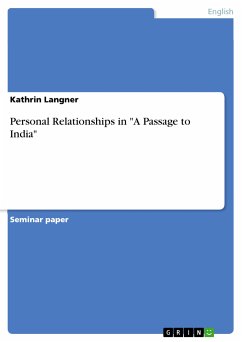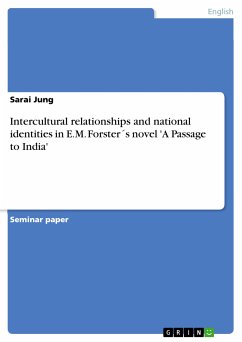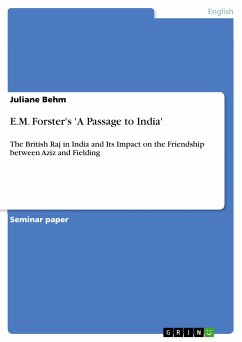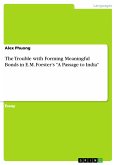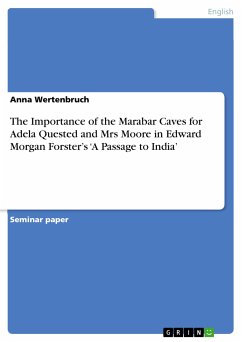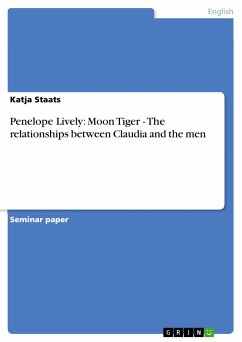Seminar paper from the year 2003 in the subject English Language and Literature Studies - Literature, grade: 1, University of Würzburg, language: English, abstract: E.M. Forster’s novel A Passage to India was published in 1924 and based on two personal visits of Forster’s to India in 1912 and a few years later after World War I in 1921. During his visits to India, Forster travelled a great deal and met many Indians, among them Syed Ross Masood, who was to become an intimate friend and also the basis for the character of the young Indian doctor Aziz in his novel. The friendship between them is portrayed by Forster in the friendship between Aziz and Mr Fielding, the English schoolmaster. In this way, Forster was able to experience both sides, maintaining a cross-cultural relationship and deriving from this completely new knowledge and feelings, but also the negative side with all the hardships of cultural and political misunderstandings. Forster gives a very vivid description of exactly these difficulties in his novel, and shows, without sparing the British in any one point, the state of British Rule in India at the time of his second visit. He attempts to criticise the unj ust superior behaviour of the British. Due to this narrative technique, the reader is immediately apt to sympathize with the ruled race, badly and impolitely treated by the English officials (such as Callendar, Turton, Heaslop). In his novel, the author attempts to answer a question even he had had to pose himself: Is it possible for an Englishman and an Indian to be friends? This question appears in the book on one of the first pages during a discussion of Aziz’s Indian friends, but the answer is left open for the time being. As already mentioned, the overall theme of the novel is that of relationships, friendship, and “the yearning for communication and connection” 1 which needs must lead to a “catastrophic failure” 2 of those attempted relationships due to a political and cultural world without an overall understanding for such mixed relationships or individuality. The novel is divided up into three main parts: Mosque, Temple and Caves. This structure has given much room for different interpretations, one of such which is the structure of thesis, antithesis and synthesis.

